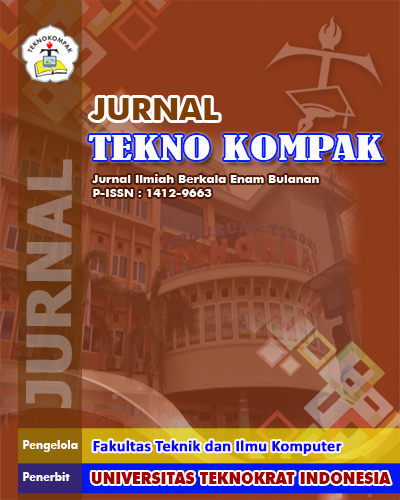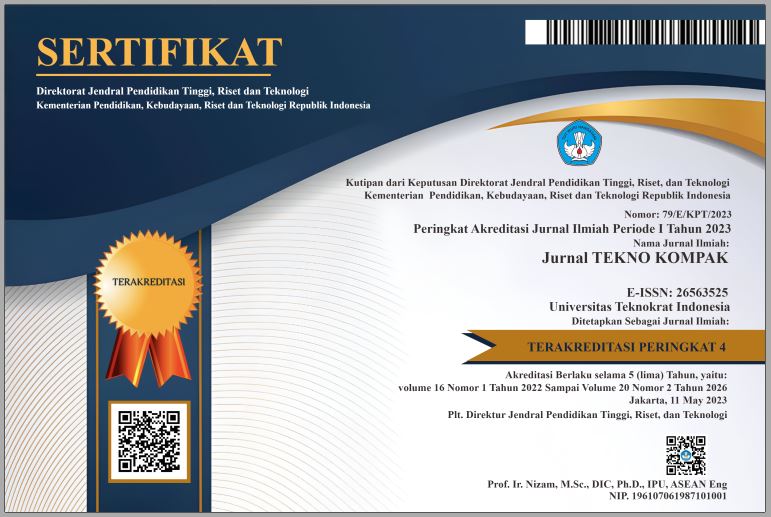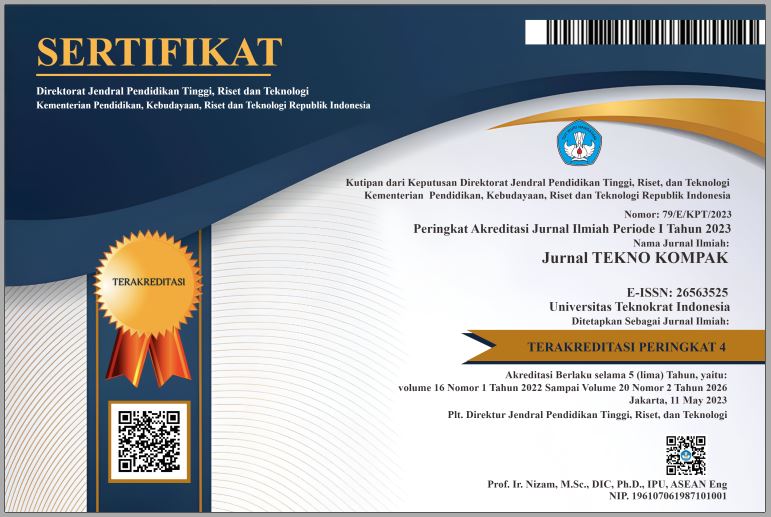
Jurnal Tekno Kompak is an open access and periodical journal dedicated to publishing the results of studies and original research in the field of Information Systems and Computer Accounting. This journal aims to expand and create innovative concepts, theories, paradigms, perspectives, and methodologies in its disciplines.
The articles published in Jurnal Tekno Kompak can be the result of conceptual thinking, ideas, innovation, creativity, best practices, book reviews, and original research results. It is published biannually every February and August.
Jurnal Tekno Kompak has P-ISSN: 1412-9663 and E-ISSN: 2656-3525 and is a SINTA 4 accredited scientific journal.
Online Submission:Announcements
JURNAL TEKNO KOMPAK ACCREDITED |
|
Dear Jurnal Tekno Kompak contributors, We proudly announce that Jurnal Tekno Kompak is Accredited “Rank 4”(Peringkat 4) as a scientific journal under the decree of the Ministry of Research, Technology and Higher Education of the Republic of Indonesia, Decree No 79/E/KPT/2023, 11 May 2023. Thank You  |
|
| Posted: 2019-08-10 | |
| More Announcements... |
















